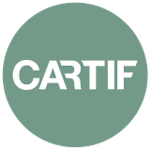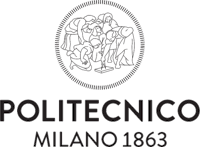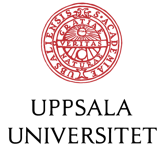Istituto per le energie rinnovabili - Projects - IEA SHC Task 59
IEA SHC Task 59
IEA SHC Task 59: Risanamento energetico di edifici storici per massimizzare la riduzione dei consumi energetici ed emissioni di CO2 (nZEB)
- Deutsch
- English
- Italiano
- Project duration: -
- Project status: finished
- Funding: Public institutions (Other projects /Project)0
- Website: http://task59.iea-shc.org/
- Institute: Istituto per le energie rinnovabili
Il progetto ha l'obiettivo di promuovere il retrofit energetico degli edifici storici - come un passo importante per realizzare l'enorme potenziale di rinnovamento basato sul solare del patrimonio edilizio esistente.
Gli edifici storici costituiscono una parte considerevole del nostro patrimonio edilizio e, sia per raggiungere gli obiettivi di mitigazione del cambiamento climatico che per preservare questa importante parte della nostra identità culturale, dobbiamo trovare approcci e soluzioni di retrofit energetico compatibili con la conservazione. Il cambiamento di paradigma osservato negli ultimi 10 anni - da "non toccare questi edifici" a "troviamo insieme le soluzioni giuste" - rende ora un buon momento per riunire le competenze a livello internazionale, per unire le esperienze dei progetti nazionali e portare la ricerca e la soluzione trovando un passo avanti.
Il progetto ha l'obiettivo di promuovere il retrofit energetico degli edifici storici - come un passo importante per realizzare l'enorme potenziale di rinnovamento basato sul solare del patrimonio edilizio esistente.
Gli edifici storici costituiscono una parte considerevole del nostro patrimonio edilizio e, sia per raggiungere gli obiettivi di mitigazione del cambiamento climatico che per preservare questa parte importante della nostra identità culturale, dobbiamo trovare approcci e soluzioni di retrofit energetico compatibili con la conservazione. Il cambiamento di paradigma osservato negli ultimi 10 anni - da "non toccare questi edifici" a "troviamo insieme le soluzioni giuste" - rende ora un buon momento per riunire le competenze a livello internazionale, per unire le esperienze dei progetti nazionali e portare la ricerca e la soluzione trovando un passo avanti.
La nuova Task è stata lanciata nell'ambito del programma di riscaldamento e raffreddamento solare dell'Agenzia Internazionale per l'Energia come iniziativa dei consorzi IEA SHC Task 37 e Task 47 (che avevano lavorato sul retrofit energetico di edifici residenziali o non residenziali) e l'EURAC ha assunto il coordinamento della nuova proposta di Task ed è ora agente operativo. Con la riunione dell'IEA SHC ExCo nella primavera del 2016 è stato accettato il concept paper della proposta di Task e si è avviata la fase di definizione dei Task, con la decisione dell'ExCo nella primavera del 2017 sono stati accettati il piano di lavoro del progetto e l'allegato e il progetto è stato avviato nell'autunno del 2017.
La struttura del Task include (A) una Knowledge Base con la raccolta e la valutazione delle Best Practice, (B) il processo di pianificazione multidisciplinare con l'identificazione di procedure replicabili su come gli esperti possono lavorare insieme alla progettazione integrata per mantenere sia l'espressione dell'edificio, sia renderlo efficiente dal punto di vista energetico, (C) soluzioni di retrofit compatibili con la conservazione e (D) dimostrazione e diffusione
Le principali attività del 2017 sono state la definizione finale del piano di lavoro e il Kick-Off of the Task nell'autunno del 2017 a Edimburgo. Nel 2018 inizieranno i lavori sul singolo Subtask - per l'EURAC con input da progetti come hBATec, PLANfenster e LowTech e il laboratorio igrotermico. I punti salienti saranno l'incontro di primavera a Bolzano e l'incontro autunnale a Gotland in conformità con la conferenza EEHB 2018.
Historic buildings make up a considerable part of our building stock (one fourth for Europe). They are the trademark of numerous cities, and they will only survive if maintained as a living space. This means, that in order to save this heritage for future generations, we need to find conservation compatible energy retrofit approaches and solutions, which allow to preserve the historic and aesthetic values while increasing comfort, lowering energy bills and minimizing environmental impact.
In the last 10 years a shift in paradigm could be observed: While in times of the first EPBD, a strong opposition from conservators and architects could be observed – “don’t touch these buildings” – there is growing a new openness, a much more constructive approach – “let’s find the right solutions together”. Examples for this development are last but not least the installation of the International Scientific Committee on Energy and Sustainability within ICOMOS and the development of “Guidelines for improving the energy performance of historic buildings” (EN16883) by the CEN TC 346 on Conservation of Cultural Heritage.Now is an important moment to identify and promote good approaches and solutions.
Realised examples show that a reduction of “Factor 4” (i.e. reduce the energy demand by 75%) and beyond is possible also in historic buildings preserving their heritage value – depending however on the specific case. While defining a minimum performance as for “standard” buildings does not make sense, when looking at the specific building, the design team should not “stop thinking” too early! A considerable reduction in demand – also thanks to optimisation of passive solar use – opens up the possibility to go with active solar contribution towards nZEB.
The Objectives of the Task are to
- Develop a solid knowledge base on how to save energy in renovation of historic and protected buildings in a cost efficient way.
- Identify the energy saving potential for protected and historic buildings according to typologies of building studied (residential, administrative, cultural…)
- Identify and assess replicable procedures on how experts can work together with integrated design to maintain both the heritage value of the building and at the same time make it energy efficient
- Identify and further develop tools which support this procedure and its single steps
- Identify and assess conservation compatible retrofit solutions in a “whole building perspective”
- Identify specifically the potential for the use of solar energy (passive and active, heating, cooling and electricity) and promote best practice solutions
- Transfer knowledge
To reach these objectives IEA SHC will collaborate with the IEA EBC at a “Medium Level Collaboration”, and with the IEA PVPS at a “Minimum Level Collaboration”.
The Task is structured in the following SubTasks:
-
SubTask A. Knowledge Base
Collection of Best Practice cases, following the approach of IEA SHC Task 37 and 47. Assessment of existing experience and identification of the energy saving potential. Special focus also on the decision context (why go for innovative solutions?) as well as monitoring and evaluation data. Subtask A will build on results from national and international research and demonstration projects, such as 3ENCULT, EFFESUS, RIBUILD, 4RinEU, “Gründerzeit mit Zukunft”, “Spara och Bevara” a.o. -
SubTask B. Multidisciplinary planning process
Identifcation of replicable procedures on how experts can work together to maintain both the expression of the building, and at the same time make it more energy efficient. Identification and further development of tools which support the process and its single steps.
Starting from the procedure for selecting measures as presented in EN 16883 (Conservation of cultural heritage — Guidelines for improving the energy performance of historic buildings) it identifies the needs for support and tools beyond what the standard offers, for example on documentation and life cycle assessment, and aims to provide the end users with an integrated design platform -
SubTask C. Conservation compatible retrofit solutions and strategies
Identification of replicable solutions from case studies. Connection to and integration of ongoing R&D on conservation compatible retrofit solutions. Assessment of technical solutions from both energy and conservation point of view. Focus especially on (i) window solutions, (ii) internal insulation (hygrothermal performance and key indicators like drying potential), (iii) Building services and HVAC (with focus on ventilation with enhanced cascade systems and active overflow principle) and (iv) integrated solar systems. -
SubTask D. Knowledge transfer and dissemination
Expert workshops (possibly with participation of observers) on different themes in conjunction with the six-monthly expert meetings; Workshops for Professionals series linked to the expert meetings and relevant conferences (EEHB 2018, Docomomo 2018, ICOMOS 2019, EEHB 2020 etc.); Info slots at stakeholder events – presenting the Task’s results and bringing back stakeholders’ feedback to the expert group; Touring exhibition where visual presentation material will be used by all partners in the diverse events they are organising or participating in. A Task website will be developed, to provide information on the Task and its objectives, but especially on results and upcoming events. To keep the interest in the Task high, regularly news pieces and audio-visual contribution are uploaded and distributed via the SHC newsletter.
Lucchi E, Buda A (2022)
Elsevier BV
Articolo su rivista
Renewable and Sustainable Energy Reviews
Ulteriori informazioni: http://dx.doi.org/10.1016/j.rser.2022.112324
Buda A, Gori V, de Place Hansen EJ, López S. Polo C, Marincioni V, Giancola E, Vernimme N, Eguisquiza A, Haas F, Herrera-Avellanosa D (2022)
Elsevier BV
Articolo su rivista
Journal of Cultural Heritage
Ulteriori informazioni: http://dx.doi.org/10.1016/j.culher.2022.07.002
Polo López CS, Bettini A M, Khoja A, Davis A M, Hatt T, Braun M, Kristan M, Podgornik J, Haas F (2021)
Contributo in atti di convegno
Conference: SBE21 - Sustainable Built Heritage | online | 14.4.2021 - 16.4.2021
Ulteriori informazioni: https://iopscience.iop.org/article/10.1088/1755-1315/863/1/0 ...
Durante A, Lucchi E, Maturi L (2021)
Contributo in atti di convegno
Conference: SBE21 - Sustainable Built Heritage | online | 14.4.2021 - 16.4.2021
Ulteriori informazioni: https://sbe21heritage.eurac.edu/paper-620835/
Peluchetti A, Guazzi G, Lucchi E, Dall’Orto I, Polo López CS (2021)
Contributo in atti di convegno
Conference: SBE21 - Sustainable Built Heritage | online | 14.4.2021 - 16.4.2021
Ulteriori informazioni: https://sbe21heritage.eurac.edu/paper-243315/
Haas F (2021)
Presentazione
Conference: SuHRF Symposium - Energy Transition in Heritage Contexts | online | 1.12.2021 - 1.12.2021
Troi A (2021)
Articolo su rivista
Südtiroler Landwirt
Haas F, Exner D, Herrera-Avellanosa D, Hüttler W, Troi A (2021)
Contributo in atti di convegno
Conference: SBE21 - Sustainable Built Heritage | online | 14.4.2021 - 16.4.2021
Ulteriori informazioni: https://sbe21heritage.eurac.edu/paper-585117/
Troi A, Exner D, Haas F (2021)
Contributo in atti di convegno
Conference: SBE21 - Sustainable Built Heritage | online | 14.4.2021 - 16.4.2021
Ulteriori informazioni: https://sbe21heritage.eurac.edu/paper-809608/
Rieser A, Leonardi E, Haas F, Pfluger R (2021)
Contributo in atti di convegno
Conference: SBE21 - Sustainable Built Heritage | online | 14.4.2021 - 16.4.2021
Ulteriori informazioni: https://sbe21heritage.eurac.edu/paper-725673/
Marincioni V, Gori V, de Place Hansen EJ, Herrera-Avellanosa D, Mauri S, Giancola E, Egusquiza A, Busa A, Leonardi E, Rieser A (2021)
Articolo su rivista
Sustainability
Ulteriori informazioni: https://www.mdpi.com/2071-1050/13/4/2266
Buda A, de Place Hansen EJ, Rieser A, Giancola E, Pracchi VN, Mauri S, Marincioni V, Gori V, Fouseki K, Polo López CL, Lo Faro A, Egusquiza A, Haas F, Leonardi E, Herrera-Avellanosa D (2021)
Articolo su rivista
Sustainability
Ulteriori informazioni: https://www.mdpi.com/2071-1050/13/5/2927
Rieser A, Pfluger R, Troi A, Herrera-Avellanosa D, Engelund Thomsen K, Rose J, Arsan DA, Akkurt GG, Kompeinig G, Guyot G, Chung D (2021)
Articolo su rivista
Sustainability
Ulteriori informazioni: https://www.mdpi.com/2071-1050/13/4/2325
Herrera D (2020)
Presentazione
Conference: Webinar IEA SHC Solar Academy| Renovating Historic Buildings towards Zero Energy - Task 59 | online webinar : 28.1.2020 - 28.1.2020
Andreotti M, Bottino-Leone D, Calzolari M, Davoli P, Dias Pereira L, Lucchi E, Troi A (2020)
Articolo su rivista
Energies
Ulteriori informazioni: https://www.mdpi.com/1996-1073/13/13/3362
Hao L, Herrera-Avellanosa D, Del Pero C, Troi A (2020)
Articolo su rivista
Sustainability
Ulteriori informazioni: https://www.mdpi.com/2071-1050/12/18/7557
Akkurt GG, Aste N, Borderon J, Buda A, Calzolari M, Chung D, Costanzo V, Del Pero C, Evola G, Huerto-Cardenas HE, Leonforte F, Lo Faro A, Lucchi E, Marletta L, Nocera F, Pracchi V, Turhan C (2020)
Articolo su rivista
Renewable and Sustainable Energy Reviews
Ulteriori informazioni: https://www.sciencedirect.com/science/article/pii/S136403211 ...




